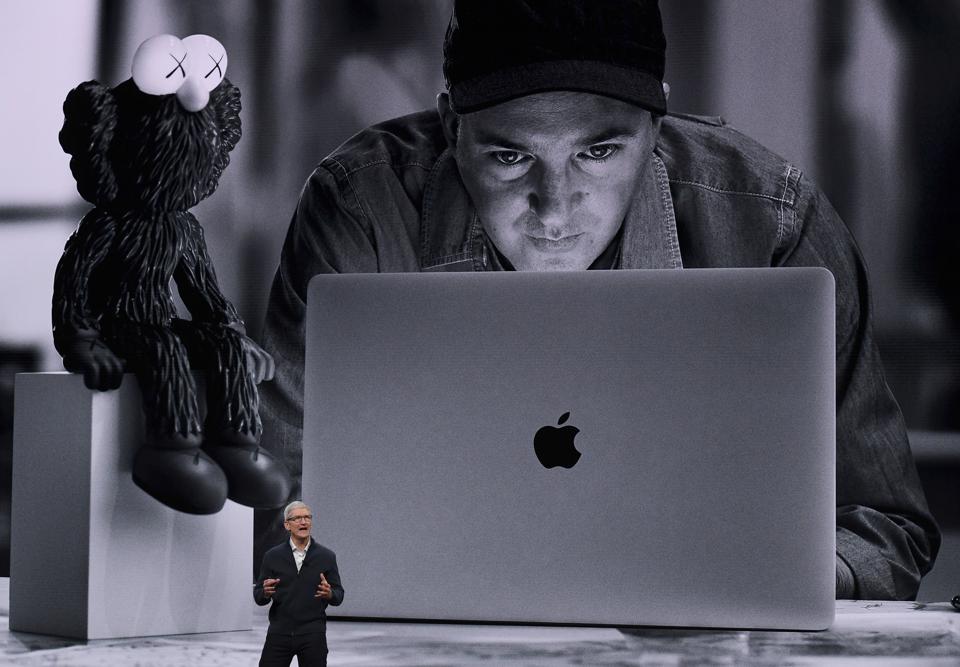Apple’s Disappointing Decision Revealed In New MacBook Pro Leak – Forbes Innovation
Apple is widely expected to launch two new MacBooks during October. They will be the first hardware available to the public using the new ARM-based processors instead of the current Intel chips. This is part of a planned two-year transition towards Apple using its own silicon over all of the Mac platform.
The laptops are very much on the bleeding edge of technology, but not much is expected to change on the outside – those who are looking for new design ideas and up to date technology outside of the move to ARM are going to have to wait until the back half of 2021.

Apple CEO Tim Cook presents new products, including new Macbook laptops, during a special event at … [+]
AFP/Getty Images
One area where Apple is behind the competition has been the screen. Windows 10 laptops, especially in the high-end markets where the MacBook Pro lives, have featured innovations such as edge to edge screens and increased brightness. They have already started to move to the next level of screen technology… the use of mini LED to create a more responsive screen with a wider and more accurate range of colours.
Recommended For You
Apple’s move to mini LED on its laptop range has been discussed by many, but the latest details from analysts looking at the supply chain suggest that consumers looking for the best screen possible on their Mac will have to wait until the second half of next year. Tim Hardwick reports:
“[Apple analyst Ming-Chi Kuo] has said a mini-LED version of a 16-inch MacBook Pro is in the works for a possible late 2020 release, and that Apple is also working on a mini-LED 14.1-inch MacBook Pro, although he hasn’t provided launch information for the latter beyond suggesting there are several mini-LED devices in the works for 2021. According to Taiwanese research firm TrendForce, Apple suppliers won’t begin competing to win manufacturing orders for new 14-inch and 16-inch MacBook Pro models with mini-LED displays until the first quarter of 2021.”
Apple’s two suppliers for miniLED screens are presumed to be Epistar and Sana Optoelectronics. With two companies in the supply chain Apple can expect to see both resilience in production, and the two companies ensuring their screens are competitively priced. But it’s the impact on this year’s two MacBook machines that will be most noticeable.
Both the MacBook Pro and thew newly mono-monikered MacBook will be running the latest hardware inside the chassis, but with older technology on the outside. For machines that are going to be highly prized by the geekerati, these machines may have game-changing internals, but they’re going to look tired and boring on the outside if they come with older screens and lumbering bezels,
Perhaps that’s the plan. The Intel-powered MacBooks will not suddenly disappear overnight, and while Apple still has to confirm just how much support the computers will have over the next few years they will remain the more dependable and stable choice for business critical environments.
Assuming the geekerati discover all the flaws, bugs, and gotchas in macOS for ARM over the next twelve months, when the ARM machines are ready ‘for wider public consumption’, the new technology such as mini LED will give the MacBook platform a much needed refresh.
It’s just that waiting another 12 months for Apple to catch up to the innovations in Windows 10 powered laptops feels out of character, especially as the innovations continue to appear on the various iPhones and iPads.